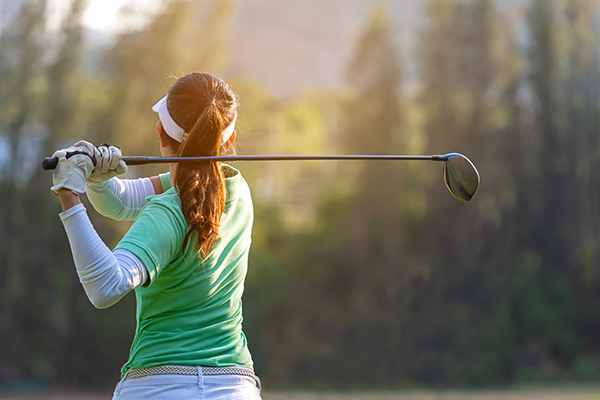By Meagan Sumrall Lott, OD, FCOVD, Belle Vue Specialty Eye Care

Eyesight or 20/20 is defined as “normal vision.” But is it? What does 20/20 really mean? Basically, it is only a measure of visual acuity (sharpness) using the familiar letter chart. This chart was developed in 1862 by Herman Snellen, a Dutch ophthalmologist. You know it as that chart on the wall that has a big E at the top. The Snellen notation of visual acuity means that a person can see an appropriate size letter from 20 feet away. One may think that the measurement of 20/20 means you see perfectly, but it is not that simple. Vision is more than 20/20.
Vision is much more complicated than the simple 20/20. In sports, most athletes already have better than 20/20 visual acuity. Some even as acute visual acuity as 20/10 (seeing a letter appropriate for 10 feet but seeing it correctly at 20 feet). Normal visual acuity will allow a baseball player to see the spin on a pitch or an archer/hunter to clearly see a target at a great distance. Adequate visual acuity is certainly important but only one factor of many that comprise the needed skills of an elite athlete.
How are the vision skills of a great athlete different from those of a good athlete? What gives the great athlete the edge over their competitors? The following paragraphs will help you to understand how vision is related to sports.There is a time-honored statement that “you can’t hit what you can’t see” and that is true, but seeing is more than 20/20. Of course, visual acuity is needed but is only a part of the total visual tool kit of the elite athlete. Other essential skills include the ability to accurately and quickly track a ball or target. How well can an athlete keep their eyes on an object that is moving rapidly? This dynamic visual acuity is much more important to the athlete than is sight when standing still.
The athlete should have adequate depth perception. This skill enables one to accurately judge distance. This skill tells a person exactly where something is in the environment. It is our built-in depth finder. Any rifleman knows that if the rifle sights are not set for the correct distance, the shot will miss the target. This is a critical visual skill in all sports. Without this skill, the batter will swing early or late. The basketball players shot may be an “air ball”.
Peripheral or side vision is as important as central 20/20 visual acuity for the athlete. This skill assists in knowing where one’s body is in space. The ability to keep one’s balance when moving is dependent upon this skill. Without it, the athlete is unstable in his stance when hitting a baseball, golf ball or when running.
Another essential skill for many athletes is superior eye hand/foot coordination. The eyes and the hands (or feet) must be fine-tuned with one another, particularly when the movement requires accelerated eye-hand (or foot) reaction and coordination.
Each athlete is born with an upper limit of their sports ability, but the goal of the sports enthusiast should be to reach the pinnacle of their skill. The vision skills that I have named are ones that can be coached with sports vision training. Why do you think that professional sports teams have coaches? They have already recruited the best athletes, yet the head coach will go out and hire hitting and pitching coaches because they realize the great player can be made better through coaching and training.
Coaching is an integral part of all sports from high-school, college or professional teams. A coach enhances the athlete’s ability to play the game. A golfer requires excellent stability of their vision, judgement of distances and superior eye-body coordination to consistently duplicate their swing. A skeet shooter requires exceptionally accurate and quick tracking ability. A baseball player should have outstanding eye tracking skills, depth perception and eye-hand reaction time (quick hands). A quarterback, wide receiver or running back would need wide peripheral vision to avoid tackles and stay safe on the field. Every sport requires different visual demands. A sports vision assessment goes beyond 20/20 visual acuity. The sports vision workup would include testing performed under dynamic and speed driven circumstances. At our office we utilize the SportsEyeQ as one tool to evaluate, measure progress, and plan treatment for athletes. This evaluation will demonstrate to the athlete how they compare to other players at the same level of play.
Once an assessment has been made, a unique training plan for each athlete, based upon their unique needs, can be developed. This training regimen is geared towards the athletes’ chosen sport and their need, as discovered by our examination.
Our office offers optometric vision training for the athlete. Just as a player trains in the weight room or in practice, they should also train their visual system the be more efficient. By employing special techniques, neural pathways will be developed and enhanced that improves performance. This improved performance will benefit the athlete while playing his/her chosen sport. The skills learned during sports vision training often carries over into their academics and everyday abilities.
Lastly, concussions and brain injury are recognized as a significant health aspect of athletes. Studies have shown that athletes who underwent sports vision training had fewer concessions during play. In addition, research has shown that athletes that have suffered a concussion can benefit from neuro-visual rehabilitation. This rehabilitation is like sports vision training, but at a slower and rehabilitative pace.
Sports vision training is for everyone, not just professional athletes. If you enjoy playing sports or want to improve your game, schedule a sports vision evaluation.


